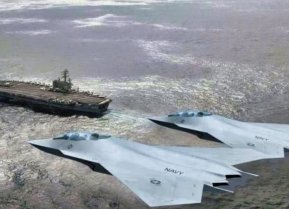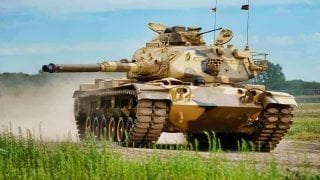M60 Patton: The U.S. Army's Best Tank Ever?
The M60 Patton first saw combat action with Israel, during the 1973 Yom Kippur War, and then the 1982 Lebanon War. The US first used their tank during Operation Urgent Fury, the invasion of Grenada, in which US forces overwhelmed the tiny island nation in days.
M60 Patton Still in Service Around the World Thanks To Lots of Upgrades - During the Korean War, the US recognized they were falling behind their Soviet competitors with respect to tank quality and quantity. The US raced to catch up. The result was the Patton, which first rolled off the production line 60 years ago. Designed in a frantic rush, the M60 circumvented typical design and testing protocols.
The result was an improperly tested and mildly flawed vehicle – a second-generation tank now entering its sixth decade of service. Despite these facts, the M60 did go on to serve in many wars and rack up some serious battlefield victories.
M60 Tank - A Short History
The M60 Patton first saw combat action with Israel, during the 1973 Yom Kippur War, and then the 1982 Lebanon War. The US first used their tank during Operation Urgent Fury, the invasion of Grenada, in which US forces overwhelmed the tiny island nation in days.
US forces' first legitimate test of the M60 was Operation Desert Storm, which featured some of history’s biggest ever tank battles: The Battle of Medina Ridge and the Battle of Norfolk. The US Marine Corps operated the M60 during Desert Storm, destroying 100 enemy tanks while only losing one tank. Although, by Desert Storm, America’s primary tank was the M1 Abrams. After Saddam Hussein was routed from Kuwait, the US retired the M60 from front-line service. And in 1997, the M60 was retired from the National Guard, ending a four-decade run as a lynchpin of American cavalry. Yet, the M60 lives on. Twenty-five years after the US retired the make, upgraded versions remain in service with 17 countries around the world.
The Upgrades
Benefiting from a robust design, and high compatibility for upgrades, the M60 still holds value in the twenty-first century.
Two variants remain in service: the M60A1 and the M60A3. Egypt has the world’s largest fleet of active M60s, with over 1,000 remaining in service.
Turkey, with the world’s second largest fleet of M60s, operates a heavily modified version of the M60A1 (aka the Sabra Mk II), which is indicative of the changes modern militaries have made to their 1950s era Pattons.
Turkey’s Sabra Mk II, has an upgraded main gun – the IMI MG252 – which is an Israeli smoothbore 120 millimeter L44 gun fused onto the M60’s turret. The upgraded Sabra also includes composite and explosive reactive-armor modules on the turret and hull. Turkey plans to continue upgrading their M60s, adding laser-warning receivers, a retractable mast with optics for area surveillance, and a remote-weapon station. Clearly, Turkey views the M60 as a system with potential for future use, especially along their border with Syria.
Jordan is also upgrading their M60s. Actually, Jordan is retiring their British-made Challenger I tanks – while keeping their M60s, which happen to be a quarter-century older than the Challenger.
With 17 countries, including the Kingdom of Saudi Arabia, Thailand, Taiwan, and Greece, still using the M60, the platform’s upgrade market has flourished. Both Raytheon and Leonardo have started to market M60 upgrades designed to extend service life further. Available upgrades include a 120-millimeter smoothbore main gun, engine upgrades, additional armor, and an updated digital fire-control system. Leonardo’s upgrade package also consists of a HITROLE remote-weapons station added to the turret roof.

Upgrading a sixty-year-old vehicle is, of course, only a stop-gap measure. The M60 won’t be viable forever. But for now, and for the near future, cash-strapped nations will continue to rely upon the M60, a product of the Eisenhower administration, to handle twenty-first-century conflicts.
About the Author: Harrison Kass
Harrison Kass is a senior defense editor with over 1,000 published articles. An attorney, pilot, guitarist, and minor pro hockey player, he joined the US Air Force as a Pilot Trainee but was medically discharged. Harrison has degrees from Lake Forest College, the University of Oregon School of Law, and New York University’s Graduate School of Arts & Science. He lives in Oregon and regularly listens to Dokken. Email the Author: [email protected].
All images are Creative Commons.


